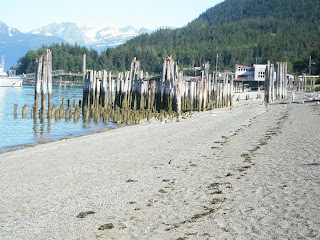
 In terms of building crates for works of art, there are some scale concerns that come to the forefront when the object is to be displayed with this container. The wood itself is "life-size," a 1 to 1 ratio to reality. The object itself may be a different scale, however. In my case, my sculptures are generally smaller than life size. This issue of a sculpture, sitting on a pallet or other wooden structure, in relation to this other object is something I'm still trying to figure out.
In terms of building crates for works of art, there are some scale concerns that come to the forefront when the object is to be displayed with this container. The wood itself is "life-size," a 1 to 1 ratio to reality. The object itself may be a different scale, however. In my case, my sculptures are generally smaller than life size. This issue of a sculpture, sitting on a pallet or other wooden structure, in relation to this other object is something I'm still trying to figure out.Let's say I place a clay trestle on a sheet of plywood, as I have done in the past. There are two contrasting scales at work (unless of course the trestle fills a museum or the plywood is "miniature," a word I hesitate to use.) Changing these variables completely alters the context. One variable I have considered is the plywood or other type of wooden base. I've asked myself if that should be the same scale as the piece. I also wonder if it is something with which I should concern myself, since I'm very much interested in this idea of transportation and moving of objects or goods. The crates I build seem to naturally fit within our expectations, as seen in these well built shipping crates at the Walla Walla Foundry. These are fulfilling a utilitarian use separate from the object. I'm seeking to merge the two.
One reason I feel this is important to address centers around the sculpture in relation to other objects. If the objects around the sculpture are smaller, the sculpture will naturally appear larger. By the same token, if the crate I build seems to large for the piece, the sculpture will feel smaller. My ceramic pieces shrink significantly through the process of making, shrinking anywhere from 10 to 15 percent of it's original size by the time it comes out of the final firing. Size and scale inherently go along with this material.







































 This site is an attempt to document my working process and act as a sketchbook, a place for exploration.
This site is an attempt to document my working process and act as a sketchbook, a place for exploration.